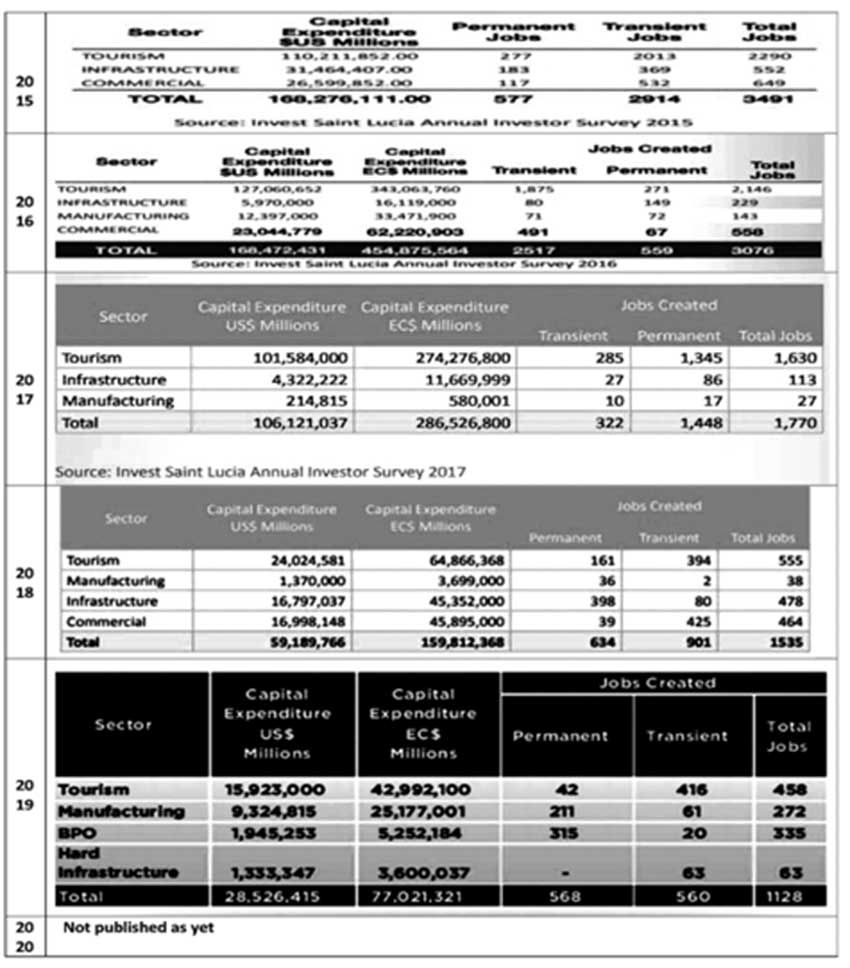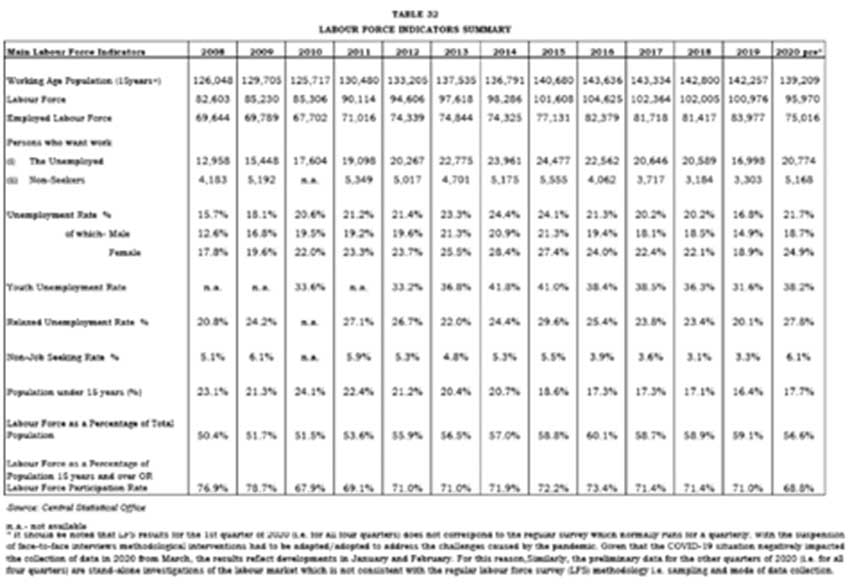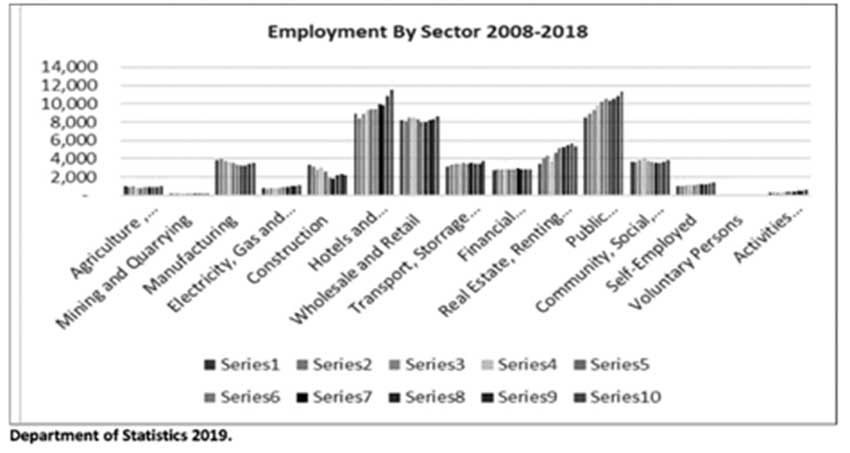THE World Bank funded Labour Market Needs Assessment Survey (LMNAS) 2020 is a stark revelation that “….…Technology is the major driving force impacting the labour force in St Lucia in the 21st century. This is also recognized and endorsed by the recent Saint Lucia Private sector recovery plan.

What is a Labour Market Needs Assessment Survey?
This Labour Market Needs Assessment Survey (2020) is geared to undertake two areas of substantive
work which include primarily;
1) To establish Baseline data and a framework for analysing the Labour sector and its current policy priorities and strategies as well as;
2) To undertake a review of the integration of the policy drivers and the labour objectives within the context of the outlined themes of the survey.
The LMNAS (2020), document, is developed in two sections. One section provides a Policy assessment while the other deals with the data analysis.
This second attempt to conduct a labour market needs survey in Saint Lucia, was under the trying conditions of the challenges of COVID-19 pandemic. Thus, the LMNAS (2020) may not have taken on board all the vagaries of the needs of the Labour Market. The sample notably, was truly representative enough to reflect a national composition of where the main commercial sectors are geographically located and the commercial entities within each district and sector which attracts and absorbs the labour force accordingly. Castries, Vieux-fort, Gros Islet and Soufriere are the main commercial areas.
Jordan as a former Director of International Trade and Investment in Saint Lucia Government, notes that the elements of youth and women / Gender are crucial factors in the economy which are seriously impacted and which need critical and immediate attention as Saint Lucia moves into a new era. There is need for proper revamping of the Governance and Policy direction of the Saint Lucia Labour market.
Youth
The most worrisome concern which was accounted for and revealed in the LMNAS (2020) report, indicates that the rate of Youth unemployment in Saint Lucia is registered at an average of 45 % ILO (2019) and Central Statistics office over the last five years and which is remarkably higher than the global average stated at 21% (International Labour Organisation) for the same periods.

The youth as an important strata of the economy increasingly has challenges competing to fill higher paying current vacancies while the employers expect or lament the need for a plethora of soft skills from the new entrants (LMNAS 2020). At the same time, it is noticeable that the employers are not keen in providing training either for skilled or elementary employees as revealed by the Investment Climate Assessment conducted in 2017. This observation has not changed over the last few years since that study.

The question is being asked while the youth form greater percent of the population. What are the authorities doing to attend to the needs of that segment of the population?
COVID-19, NSDC and TVET.
The LMNS (2020) states that the Covid 19, is not the cause of the current situation but has exposed the level of inertia in the Saint Lucia socio eco-system. The system is characterized as registering a weak and isolationist system of public sector institutional support structures. The skills training lags way behind the needs of the employer as well as the aspirations of the new graduand who is technologically trained entering the workforce. The final result, is the critical impact on the production process. The matters raised ought to be of concern to the Technical Vocational Education and Training (TVET) as well as the National Skills Development Centre (NSCDC). If we are to examine further, the NSDC seems moribund and outmoded in the findings of this report. While the TVET and NSDC respectfully are guided by a Policy ending 2024, it only addresses a limited skill set and traditional occupational areas. The market has become more dynamic and complex and thus warrants new strategies to be adopted to respond and act more proactively to the demands of those existing situations.
Herein is an inherent appeal on behalf of the youth and gender needs of the labour market.
The LMNAS (2020) reveal that employers hardly employ the NSDC graduands and in most cases hardly know of the institution. However, in cases when employed by the private sector, the report further reveals that the engagement of that graduand resonates with a satisfaction level to the employer but only in areas of elementary occupations and or traditional skills training.
POLICY RESPONSE
However, a radical approach has to be taken with the pedagogy of formal education and complementary vocational skills training. The youth employment Policies, if any, has to be adopted as an employment strategy to be pursued if for example the goals set out in the United Nations Strategic Development Goals by the year 2030, (SDG 30), with its provisions for job decency and equity and gender equality are to be achieved.
The LMNAS (2020) study states that the strategy should be more meaningfully focused on career rather than just short term “job creation.” Unfortunately, during the last five years while there is a policy recognition of a Portfolio related to “Finance, Economic Growth, Job Creation, External Affairs and the Public Service” in the respective Estimates of Revenue and Expenditure in Saint Lucia – yet “job creation” is neither Policy driven, nor activated in manner to pursue employment strategies to assist the youth; nor from an institutional perspective, or an office which has been staffed for the last five years.
This is how employment appears in Government literature one being the Invest St Lucia corporate reports https://investstlucia.com/p/Annual report on the following Transient and permanent jobs. The reader is therefore invited to examine closely the Tables reflecting performance for the years 2015 – 2019 below.
This is how employment appears in Government literature one being the Invest St Lucia corporate reports https://investstlucia.com/p/Annual report on the following Transient and permanent jobs. The reader is therefore invited to examine closely the Tables reflecting performance for the years 2015 – 2019 below.

(Transient colloquially means “one off” ….a person who is staying or working in a place for only a short time).
Further the invitation is also extended to examine the data from the recently published Economic and Social Review 2020, which speaks to the Saint Lucia Labour Force indicators.


The LMNAS (2020), asserts however that the vacancies were created by several “exits” from the labour market. There is also an estimation that the needs reflect a trend from the newly “hireds” post the high of the COVID impact whether “retirees” and or “firings or redundancies”. Some employers, have had a field day, as a result of the weak institutional enforcement and redress policies of the Labour market, while the welfare of employees, was impacted negatively. (There are numerous cases at the Labour department. (one example which is not uncommon – is a case of a 17-year employee of a major hotel being denied severance pay. The employee lost her job and the employer was only willing to offer re-employment in the same position but at a lower pay. This is one of the several unusual occurrences.). Ironically, employers refer to their adherence to the labour laws and claim benefit of increased productivity while affected employees decry the system.
The findings of the study, reveal the employment areas which exist and include as a first option as per “job openings” outlines the areas of major unfilled positions include jobs for Managers, Professionals, technicians and associate professionals, Clerical support workers, Service and Sales workers, Craft and related workers, Plant and machine operators and assemblers and elementary occupations. Craft and related areas are quite interesting areas but one cannot continue to anticipate from a traditional perspective but rather with the embrace of innovation, and digitization as we speak to the Orange economy.
Saint Lucia’s economy, is characterized as being of high-level indebtedness; suffers from high unemployment, worsening terms of trade with a high import bill and non-sustainable economic growth indicators and challenges with its World Bank assessment. The inferences made from the data, for the LMNAS (2020), encompasses a country with the absence of an Employment Policy and minimum wage, a Gender Policy, and a youth Policy.
It is therefore an imperative to adopt better approaches to deal with the current challenges which impact the labour market in the aforementioned areas particularly for the youth and women. A primary one which the Policy makers need to address is the declaration of Saint Lucia’s commitment since its own adoption of the Sustainable Development Goals (SDG) by year 2030 and particularly the SDG No 8 which deals with the promotion of sustained, inclusive and sustainable economic growth, full and productive employment and decent work for all… It is hoped that the policy makers will be guided as a result of the level of the inertia and “practices within silos” of the public sector institutions to address those matters expeditiously. The left hand does not appear to be close enough to the right hand and is further imperiled as the policy which supposedly needs to emanate from the cerebral does not even appear to be linked. Can this be improved with greater awareness programmes only?
David Jordan is a former Director International Trade and Investment current Chairman of FRIEETAD in the OECS Inc. [email protected] He says the LMNAS (2020) is a must read in the silly season for the Saint Lucia Policy maker as well as the youth, women and student’s advocacy groups. The author of the article is well trained to provide further guidance in the area of entrepreneurship and enterprise development as well as policy focused approaches in areas of Trade and economic growth and development.














Great clear and professional explainatory contribution on the situation we face in such times.
Great clear and professional explainatory contribution on the situation we face in such times. Thank You for sharing the facts.